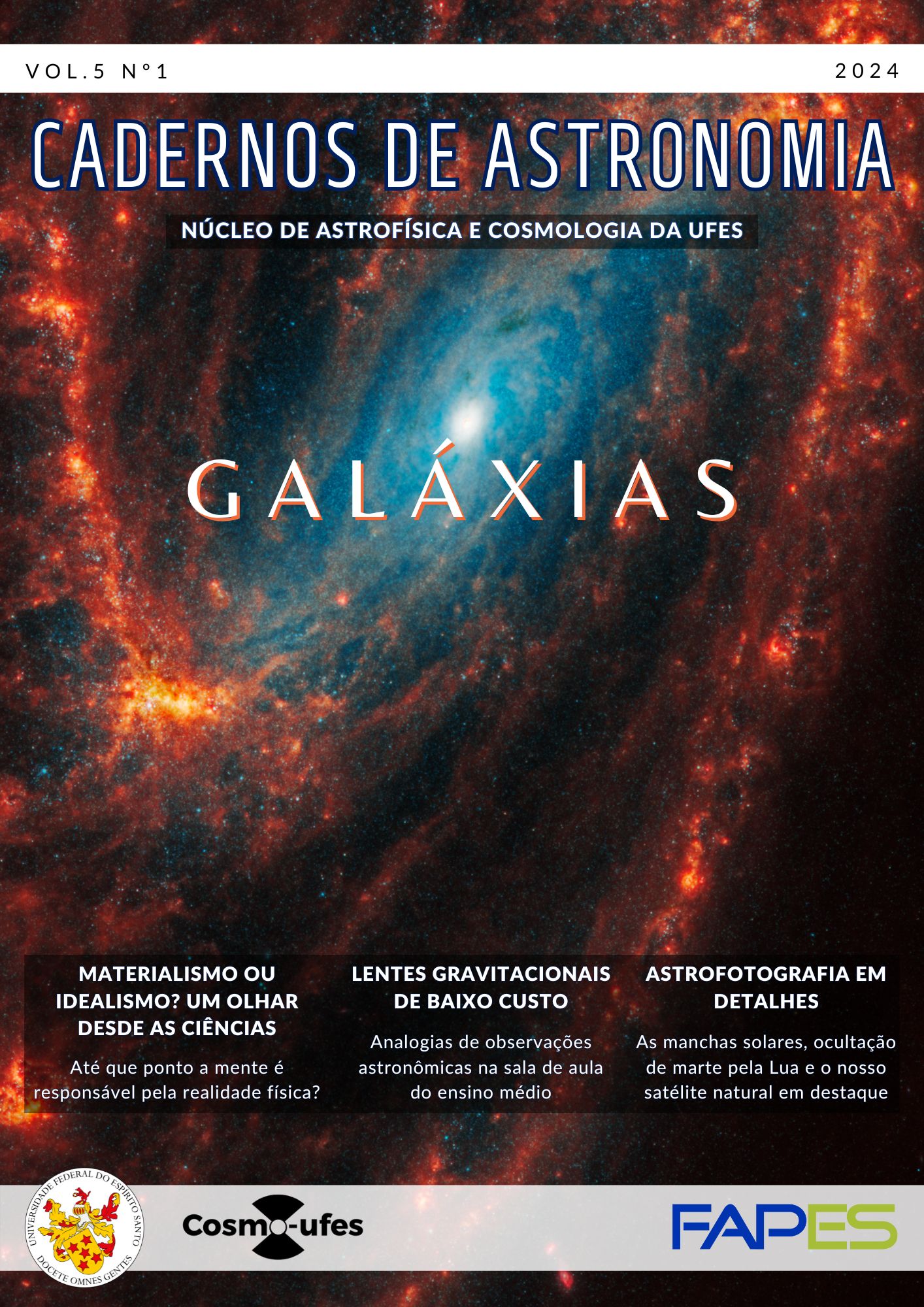A ocultação de Marte pela Lua em 06 de setembro de 2020: contribuições da ciência aberta para a pesquisa em astronomia
DOI:
https://doi.org/10.47456/Cad.Astro.v5n1.43581Palavras-chave:
astronomia, ocultação lunar, astrofotografia, ciência cidadã, ciência abertaResumo
A astronomia desperta o interesse e cativa a imaginação humana devido à sua conexão com o que há de mais profundo nas indagações existenciais que habitam a mente. A beleza e a grandiosidade dos eventos celestes faz brilhar os olhos e, por essa razão, existem muitas pessoas que dedicam o seu tempo e recursos a explorar e capturar os eventos astronômicos. Neste artigo descrevemos a ocultação de Marte pela Lua, que foi capturada no dia 6 de setembro de 2020 pelo Observatório Lunar Vaz Tolentino. Discutiremos também de que maneira essa paixão pela ciência pode contribuir com o trabalho de pesquisadores da área e como o acesso aberto pode ajudar nesse processo.
Referências
[1] P. Santos-Sanz et al., James Webb Space Telescope observations of stellar occultations by solar system bodies and rings, Publications of the Astronomical Society of the Pacific 128(959), 018011 (2016).
[2] R. G. French et al., Uranus ring occultation observations: 1977–2006, Icarus 395, 115474 (2023).
[3] M. A. Barucci et al., The Outer Frontiers of the Solar System: Trans-Neptunian Objects and Centaurs, The Messenger 141, 15 (2010). Disponível em https://www.eso.org/sci/publications/ messenger/toc.html?v=141&m=Sep&y=10, acesso em fev. 2024.
[4] M. L. F. Nascimento, Teoria da relatividade geral-100 anos de uma nova visão de mundo, Revista Politécnica 25, 12 (2017).
[5] S. Green, An Illustrated History of Open Science, Open Access for Societies – The Wiley Network (2017). Disponível em https://www.wiley.com/en-us/network/ publishing/societies/open-access/ an-illustrated-history-of-open-science, acesso em fev. 2024.
[6] J. Trojan et al., Citizen science as a new approach in Geography and beyond: Review and reflections, Moravian Geographical Reports 27(4), 254 (2019).
[7] H. Brinken, Fostering The Practical Implementation Of Open Science In Horizon 2020 And Beyond, Zenodo (2018).
[8] S. Albagli, Ciência aberta em questão (IBICT Unirio, 2015), 9–25.
[9] D. T. Machado, GalileoMobile: inspirando jovens sob o mesmo céu, Cadernos de Astronomia 3(2), 75 (2022).
[10] R. Langhi e R. Nardi, Ensino da astronomia no Brasil: educação formal, informal, não formal e divulgação científica, Revista Brasileira de Ensino de Física 31(4), 4402 (2009).
Downloads
Publicado
Edição
Seção
Licença
Copyright (c) 2024 Maria Paula F. Novais, Tolentino

Este trabalho está licenciado sob uma licença Creative Commons Attribution 4.0 International License.






